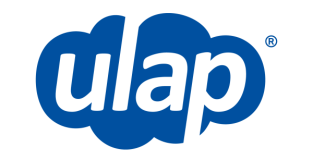A communications stack comprised of off-the-shelf software packages might seem appealing due to its simplicity and uniformity. However, this approach can quickly become a hindrance rather than a help. Different businesses have unique communication needs based on their size, industry, workforce distribution, and customer engagement strategies. For example, a retail company with a dispersed workforce might prioritize mobile communication solutions, while a financial services firm might need robust security and compliance features in their communication tools.
Moreover, the rapid pace of technological advancements means that sticking to a one-size-fits-all model can render a business obsolete. Communication platforms must evolve alongside the business, integrating new features and capabilities that align with changing demands and technological landscapes.
Tailoring Communication Platforms to Business Needs
Different businesses have unique communication requirements, and selecting the right platform is crucial for meeting these specific needs. Here’s a closer look at how various communication platforms—Zoom, Microsoft Teams, ULAP Voice, Simplify360, and NICE—can serve different business objectives:
Zoom Workplace: The Virtual Meeting Specialist
- Strengths: Zoom excels in facilitating high-quality video conferencing and webinars, making it ideal for businesses that rely heavily on virtual meetings and large-scale virtual events. It offers robust features such as breakout rooms, webinar hosting, and integration with other productivity tools.
- Weaknesses: For companies requiring extensive internal collaboration and document sharing, Zoom might lack the comprehensive suite of collaboration tools that other platforms offer. It’s primarily designed for real-time communication rather than ongoing project management.
Microsoft Teams: The Collaboration Hub
- Strengths: Microsoft Teams is a comprehensive platform that integrates chat, video meetings, file storage, and application integration. It’s particularly beneficial for businesses with a strong reliance on Microsoft 365, offering seamless integration with Office apps and other Microsoft services. Teams is ideal for fostering collaboration in remote or hybrid work environments, supporting project management, and maintaining continuous communication.
- Weaknesses: Smaller businesses or those with limited IT resources might find the extensive features of Teams overwhelming or underutilized. The complexity of the platform can require significant onboarding and training.
ULAP Voice: The Simplified Voice Solution
- Strengths: ULAP Voice focuses on delivering streamlined voice communications with essential business call functions. It’s perfect for businesses that need reliable voice communication without the complexity of a full unified communications platform. This can include industries like logistics, healthcare, and customer service, where straightforward, dependable voice calls are critical.
- Weaknesses: While excellent for voice calls, ULAP Voice may not suffice for businesses requiring integrated video conferencing, team collaboration, or document sharing tools. It’s best suited for scenarios where simplicity and reliability are more critical than advanced features.
Simplify360: The Social Media Engagement Tool
- Strengths: Simplify360 excels in social media management, customer service, and engagement analytics. It’s ideal for businesses with strong social media presence and customer engagement needs. Simplify360 allows for efficient monitoring, responding to customer queries, and analyzing social media performance across multiple platforms.
- Weaknesses: While great for social media interactions, Simplify360 might not offer the extensive internal communication features needed by businesses focusing on internal collaboration and project management.
NICE: The Customer Experience Enhancer
- Strengths: NICE provides advanced solutions for customer experience management, including contact center operations, workforce optimization, and analytics. It’s particularly beneficial for businesses that prioritize high-quality customer interactions and need robust tools for managing customer service operations. NICE offers features like call recording, speech analytics, and performance management.
- Weaknesses: For businesses not heavily reliant on customer service operations, NICE might offer more functionality than necessary. Its focus on customer experience might also mean it lacks comprehensive internal communication and collaboration features.
Customizing Your Communications Stack
Customizing your communications stack involves selecting and integrating multiple communication platforms and tools that address specific business requirements. This tailored approach ensures that each component of the stack works seamlessly with the others, creating a cohesive and efficient communication environment.
-
Assessing Business Needs
Start by conducting a thorough assessment of your business communication needs. Identify the key areas where communication plays a critical role and the specific challenges that need to be addressed. This might include internal collaboration, customer support, remote work capabilities, or regulatory compliance.
-
Choosing the Right Tools
Once you have a clear understanding of your needs, you can begin selecting the tools that best address these requirements. Look for platforms that offer flexibility and scalability, allowing you to add or remove features as needed. Consider tools that integrate well with your existing systems to avoid silos and ensure a smooth workflow.
-
Integration and Implementation
Integration is a crucial step in creating a customized communications stack. Ensure that your chosen tools can communicate with each other and with your existing infrastructure. This might involve using APIs, middleware, or third-party integration services. The implementation process should be carefully planned and executed to minimize disruption and ensure a smooth transition.
Edge Computing: A Case Study in Customization
Edge computing serves as a prime example of how tailored solutions can outperform standardized ones. In traditional cloud computing, data is processed in centralized data centers, which can lead to latency issues and inefficiencies. Edge computing, on the other hand, processes data closer to the source, meeting unique operational demands more effectively. This approach is particularly beneficial for industries like manufacturing, healthcare, and retail, where real-time data processing and low latency are critical.
ULAP’s smart cloud network exemplifies the advantages of edge computing with its strategically placed Points of Presence (POPs) across six continents. By processing data nearer to the source, ULAP minimizes latency and maximizes efficiency, ensuring that businesses can access the necessary computing power when and where they need it. This global reach allows ULAP to support diverse operational demands, from real-time analytics in manufacturing to instant data processing in healthcare.
Just as edge computing addresses specific operational needs by bringing computation closer to the data source, a customized communications stack brings the right tools and features closer to the business requirements. This tailored approach ensures that businesses can respond quickly to changes, improve operational efficiency, and deliver better outcomes.
*
In today’s competitive business environment, a one-size-fits-all communications stack is often insufficient. By assessing your business needs, selecting the right tools, and ensuring seamless integration, you can create a customized communications stack that enhances efficiency, collaboration, and customer satisfaction. Embrace the power of customization and transform your communication strategy to meet the unique demands of your business.
For more insights on the importance of tailored solutions, check out this IDC article on edge computing and discover how customization can drive better performance and outcomes.






